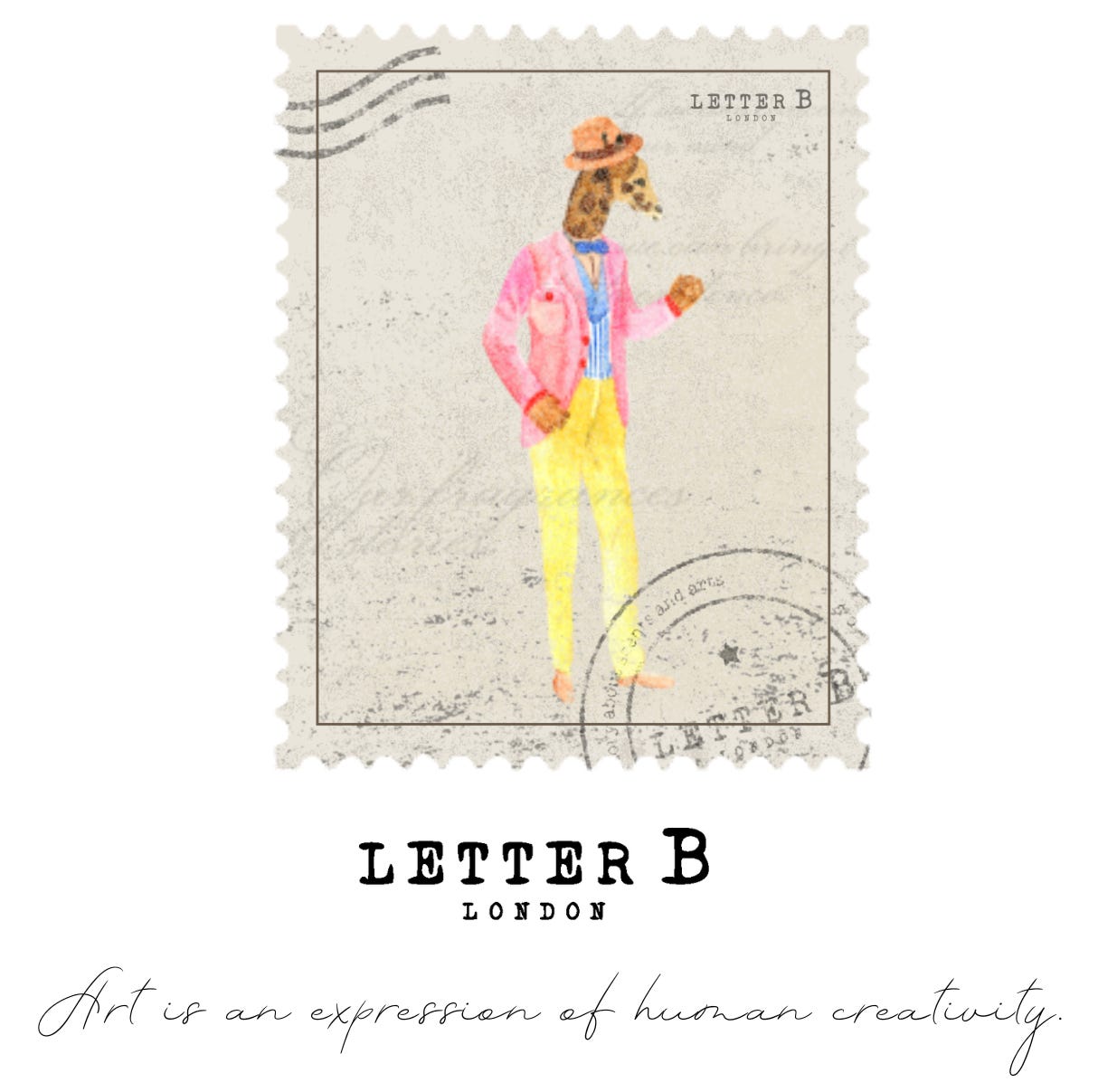Positioning is a Mindset
From Miyagi to Sinek to Sun Tzu, a philosophy of quiet power.
The most enduring thinkers don’t just act—they position themselves so success becomes inevitable.
🌱 Sun Tzu (The Art of War) teaches us to win without fighting. His strategy isn’t based on confrontation, but on clarity. Choose your terrain. Set your tempo. Let others chase.
♾️ Simon Sinek (The Infinite Game) reminds us that legacy outlasts victory. The ones who endure are those who know how to stay relevant, resilient, and purpose-driven.
🥋 Mr. Miyagi (The Karate Kid) shows us that mastery begins long before the match. The wax-on, wax-off is more than a quote —it’s a lesson in muscle memory, discipline, and the power of slow, intentional practice. The same applies to creativity, leadership, and brand-building. The small daily moves most don’t see? That’s where the work happens.
Karate Kid Trivia, Reframed as Wisdom
Sometimes positioning is also about perception—what you make people see and feel…
- The crane kick wasn’t real. It was invented just for the movie, but it became iconic.
- The story was inspired by real life. Screenwriter Robert Mark Kamen wrote it from his own experiences with bullying and martial arts training.
- Mr. Miyagi never wears a black belt. he didn’t care about status. For him, it was about balance, humility, and quiet mastery.
- “Wax on, wax off”. A reminder that true strength often hides in the small, consistent things.
Wisdom from the Greats
Newton: “If I have seen further, it is by standing on the shoulders of giants.”
Curie: “Progress is neither swift nor easy.”
Darwin: “Survival belongs to those who adapt.”
Einstein: “Strive to be of value, not success.”
Tesla: “The future, for which I really worked, is mine.”
Da Vinci: “Knowing is not enough; we must apply.”
Feynman: “Knowing the name isn't knowing the thing.”
Fuller: “Don’t fight the system. Build a better one.”
Bourgeois: “Tell your own story.”
Baldwin: “I’ll fit where I make space for myself.”
Positioning isn’t passive. It’s a mindset. A choice.
It’s how we prepare the ground before planting.
It’s how we know when to speak, and when to wait.
It’s the art of creating space before taking it.
Where you stand today shapes what becomes possible tomorrow.
Beijos,
Babi
https://barbaracraveiro.substack.com/p/positioning-is-a-mindset
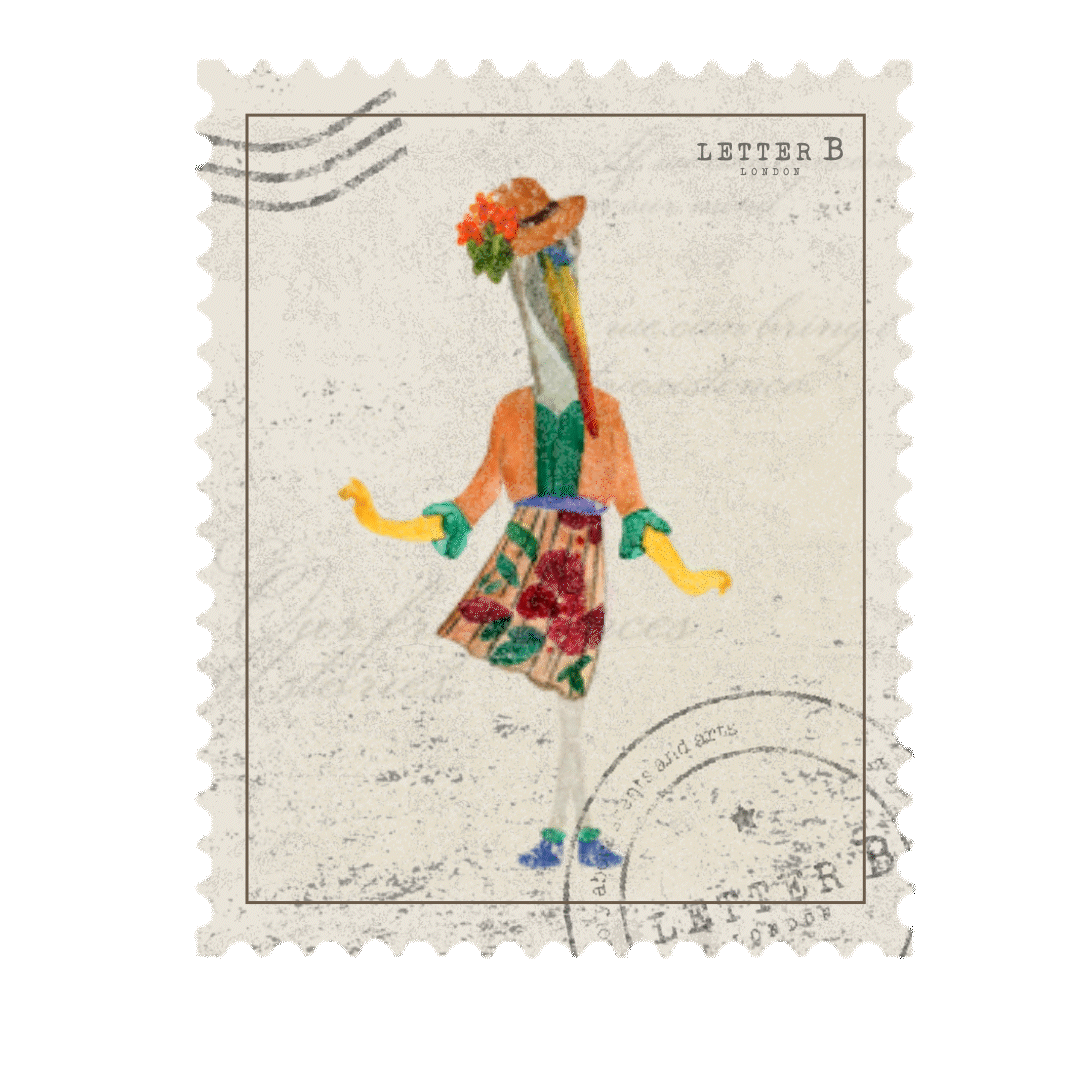
The Halo Effect & Tattoos After 40
The Psychology Behind It
Recently, I met two nurses with tattoos and asked, “Why did you get them?”
Both got inked after 40. Their answers? Not just aesthetics, but identity, psychology, and perception.
Thinking about why tattoos become more appealing later in life, I revisited the halo effect and Daniel Kahneman’s System 1 & System 2 thinking (from Thinking, Fast and Slow).
- System 1 is fast and emotional—driven by instinct.
- System 2 is slow and logical—stepping in for big decisions.
The Halo Effect: How Perception Shapes Reality
We judge based on first impressions. If a brand feels premium, we assume all its products are top-notch. Tattoos work the same way—seen as rebellion in youth but as self-expression in midlife.
Most tattoos before 40? System 1: impulse, rebellion, fun.
Tattoos after 40? System 2 takes the wheel: deeper meaning, self-awareness, and intention.
Why Ink Feels Different After 40
- Life Experience = Meaningful Tattoos. Marking transformations—loss, love, personal growth.
- Strategic & Symbolic Choices. Thoughtfully placed, carefully designed. A mix of impulse (System 1) and intention (System 2).
A Look at Real Stories
The Guardian article "I got hooked on tattoos at 52. Is this a midlife crisis – or a new me?" explores how tattoos later in life are linked to self-discovery, breaking age stereotypes, and cultural shifts.
Beverlie Manson, 76, a children’s book illustrator, got her first ink in her 70s, after meeting the heavily tattooed man who would become her third husband. She, too, had not been much of a fan until she saw her husband naked. “The first time he and I got our kit off, I was shocked,” she says. “But it’s so aesthetically interesting.” His tattoos were random – she mentions the words “special fried rice”, in the relevant Chinese script, inked on his leg – and she decided to follow suit, with a line heart on the front of her left shoulder.
Next time you see someone with a tattoo, ask them about it. Chances are, there’s a great story behind the ink.
Beijos,
Babi
https://barbaracraveiro.substack.com/p/the-halo-effect
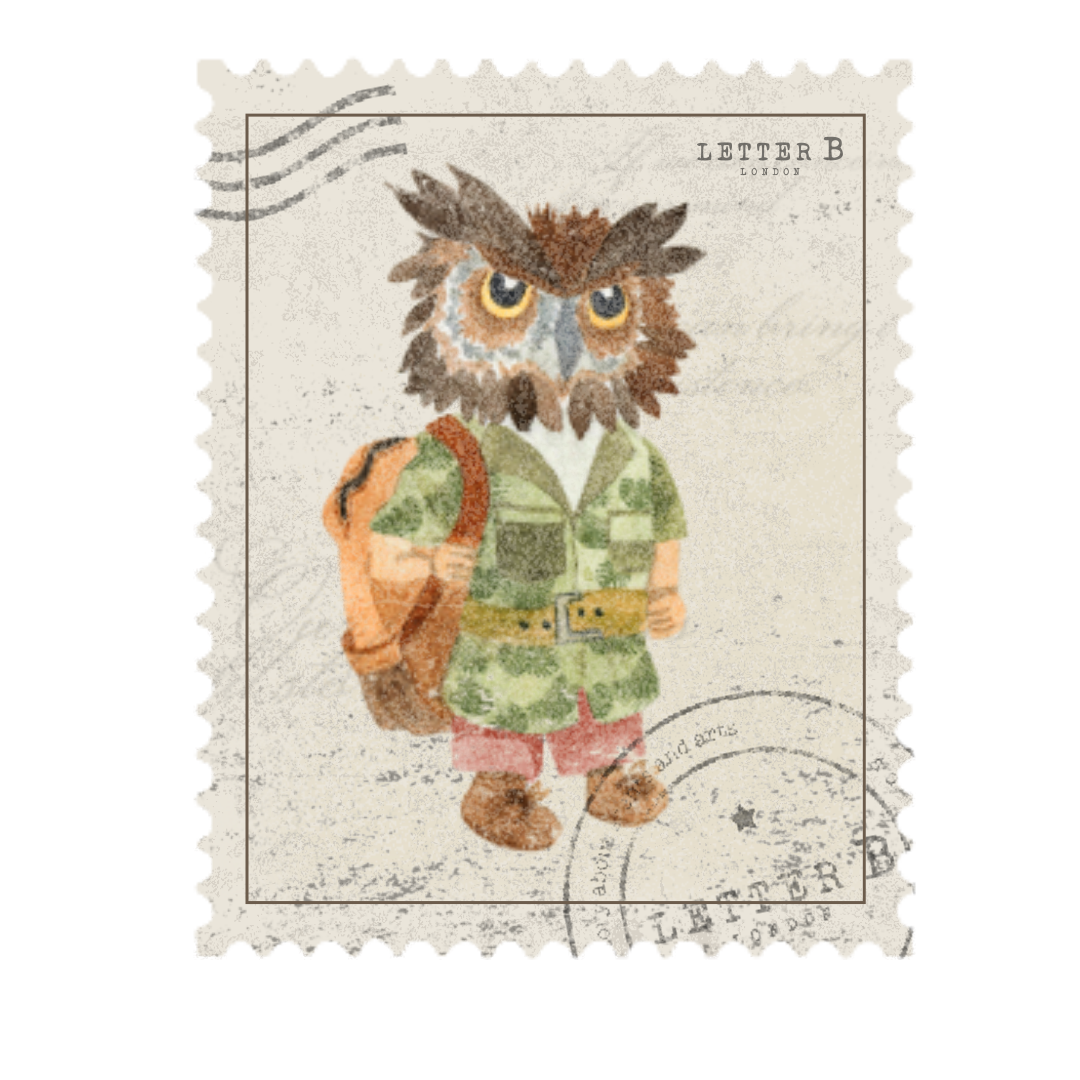
Crisis, Chaos & Popcorn: PR War Rooms
Battles with chicken, bananas and bikinis
I recently met Bella, a vibrant young PR professional, who gave me an insider’s view of crisis management—a battlefield where brands fight for survival, reputation, and, hopefully, a little dignity.
While the mention of a war room conjures images of intense meetings and rapid-fire decision-making, it’s also the stage for some of the most unforgettable and many times laughable moments in brand history.
1. KFC’s Chicken Crisis (2018)
A classic logistics fail I’d studied back when I was running operations in a fintech. Imagine: a fried chicken chain with no chicken.
The Crisis: KFC ran out of chicken across the UK after a supply chain switch designed to cut costs went terribly wrong. Chaos broke out. Angry customers stormed social media. Memes exploded.
The PR Save: KFC leaned into the absurdity with a full-page newspaper ad featuring an empty bucket and the letters “FCK”—an apology as bold as it was brilliant. They turned humiliation into humor.
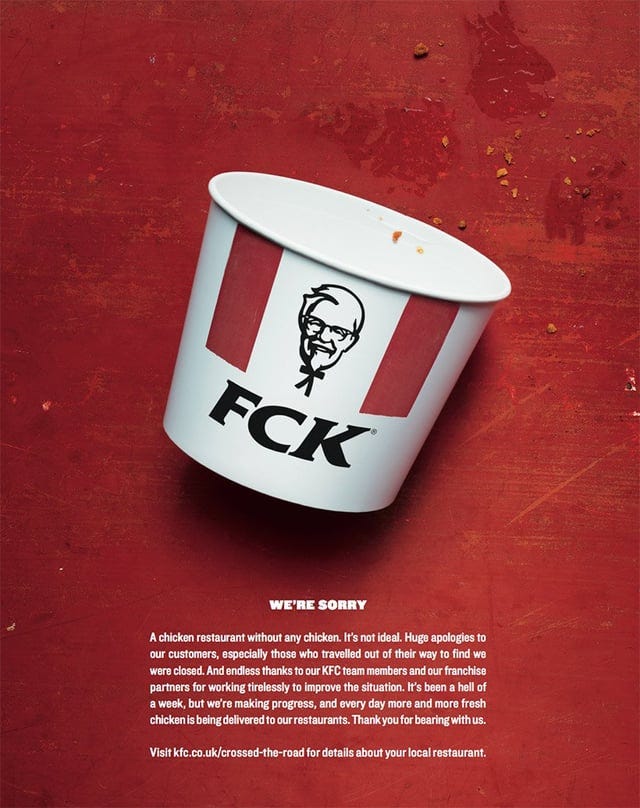
2. Audi’s Banana Blunder (2020)
“How did nobody catch this?” The Audi banana fiasco was one of those moments.
The Crisis: A little girl eating a banana while leaning on a luxury car sparked accusations of inappropriate and suggestive imagery.
The PR Save: Audi quickly took down the ad and issued a public apology, but the damage had been done—the internet never forgets.

3. Lululemon’s Free Clothes for Naked Shoppers (2002)
The Crisis: To promote the grand opening of their new store in Vancouver, Lululemon offered free clothes to the first 30 people who stood naked outside the store for 30 seconds. While it was meant to be playful, the stunt caused public controversy.
The PR Save: Despite the backlash, Lululemon framed the event as a fun and quirky celebration of body positivity. Their unapologetic stance fit their brand, and the buzz generated by the stunt helped establish them as a bold, youthful brand.
4. Red Lobster and the Queen Bey Effect (2016)
The Crisis: Beyoncé referenced Red Lobster in her hit song “Formation,” and fans expected a sizzling response. Instead, Red Lobster served up a lukewarm tweet hours later: “Cheddar Bey Biscuits.”
The PR Save: They eventually gained traction, but the delay was a lesson in real-time marketing. Pro tip: When Beyoncé hands you the mic, don’t fumble it.
5. Ryanair’s Bikini Calendar Controversy (2014)
A charity calendar featuring flight attendants in bikinis
The Crisis: Accusations of sexism and objectification flooded in.
The PR Save: Ryanair’s unapologetic stance fit their rebellious brand identity, but it also fuelled the controversy. Sometimes doubling down can backfire—or, in Ryanair’s case, boost visibility.
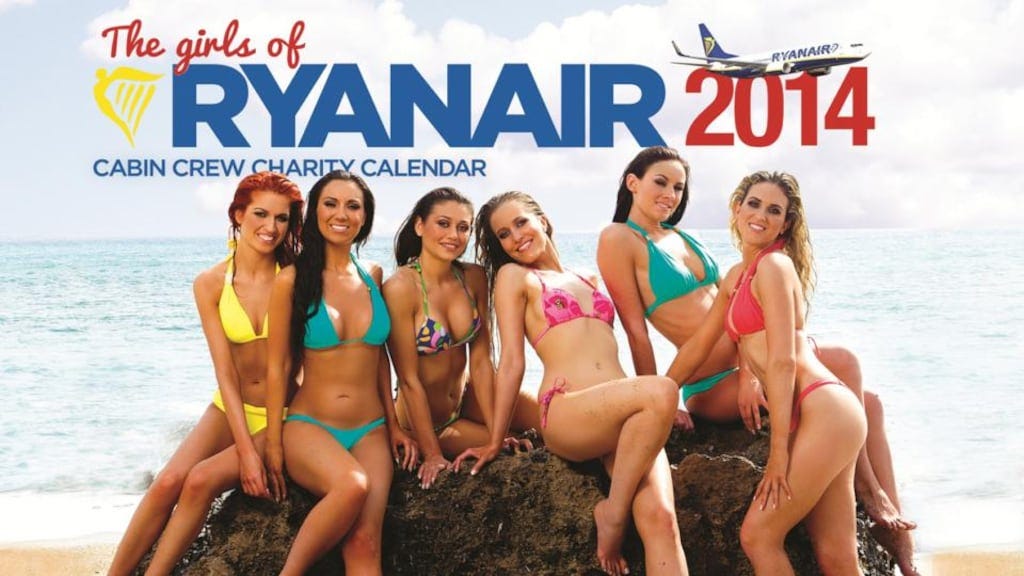
6. Sunny Co Clothing’s Free Swimsuit Frenzy (2017)
The promise of a free swimsuit turned into a logistical nightmare.
The Crisis: Sunny Co launched an Instagram giveaway offering a free "Pamela" swimsuit to users who reposted their image and tagged the company within 24 hours. The campaign went viral, leading to an overwhelming number of participants. While some viewed this as a logistical misstep due to the unexpected demand, the CEO argues that the giveaway was a massive success. He points out that the campaign increased brand awareness and social media following, ultimately benefiting the company despite the challenges faced.

7. Burger King’s Women’s Day Tweet (2021)
When good intentions meet bad execution.
The Crisis: Burger King UK tweeted, “Women belong in the kitchen,” intending to highlight gender inequality in the culinary industry. It backfired spectacularly.
The PR Save: They deleted the tweet and issued an apology, but the internet had already crowned this a PR fail.
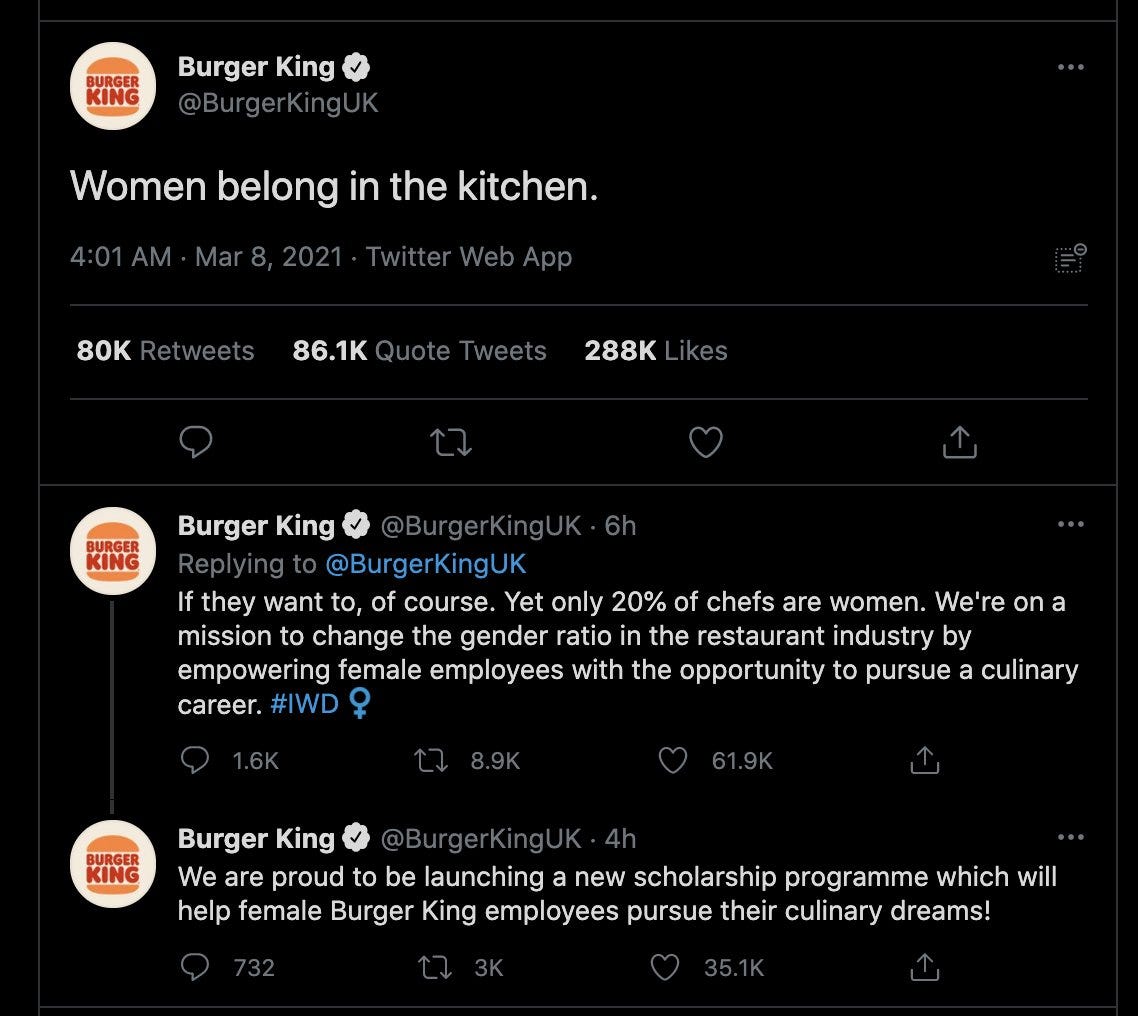
These crises are proof that even the most prepared PR teams can find themselves in hot water. But it’s often the recovery, not the crisis itself, that defines success. The war room isn’t about avoiding every mistake—it’s about how creatively and confidently you handle the unexpected.
Because when the ball drops, sometimes you just have to roll with it—and maybe turn it into a meme-worthy masterpiece along the way.
Beijos,
Babi
https://barbaracraveiro.substack.com/p/crisis-chaos-and-popcorn-pr-war-rooms
